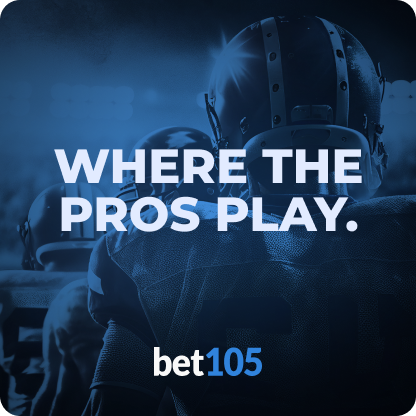Low Vig vs. Traditional Juice: Why It Matters More Than Bonuses
In the world of sports betting, one of the most overlooked yet crucial concepts is vigorish — often shortened

In the world of sports betting, one of the most overlooked yet crucial concepts is vigorish — often shortened to vig — which refers to the built-in commission sportsbooks take on every bet. While flashy signup bonuses and free bets dominate the marketing spotlight, what truly separates winning bettors from the rest is a deeper understanding of the juice they’re consistently paying over time.
To illustrate the difference, consider this: if you’re placing $1,000 per week on traditional -110 lines, you’re paying roughly $45 in vig each week. Over the course of a year, that adds up to over $2,300 in hidden fees. Now compare that to a low-vig or reduced juice sportsbook offering -105 lines. Suddenly, your yearly cost drops to under $1,200. That’s more than double the edge — and unlike bonuses, this edge applies to every single bet you place, not just your first one.
Bonuses may offer a quick dopamine hit and short-term bankroll boost, but low vig has long-term, compounding value. In this article, we’ll break down how reduced juice works, why it’s superior to traditional pricing models, and how sharp bettors use it as a foundation for sustainable profitability.
Understanding the Juice
Every sportsbook bakes in a margin — their vig — to ensure profitability regardless of game outcomes. The most common odds format for American bettors is -110, meaning you need to wager $110 to win $100. This pricing gives the book a house edge of roughly 4.76%, assuming balanced action on both sides.
Here’s how traditional -110 odds work:
- Team A: -110
- Team B: -110
- Total implied probability: 52.38% + 52.38% = 104.76%
- That 4.76% is the vig — and you’re paying it with every bet.
By contrast, reduced juice sportsbooks offer odds like:
- Team A: -105
- Team B: -105
- Total implied probability: 51.22% + 51.22% = 102.44%
- This lowers the vig to 2.44% — nearly half the cost of a traditional book.
And when you bet tens of thousands of dollars per year, this difference becomes massive.
The Illusion of Bonuses
Most regulated sportsbooks focus heavily on bonuses and promotions to attract players. These include:
- Deposit match bonuses (often with rollover requirements)
- Risk-free bets
- Free bet tokens
- Odds boosts
While they can provide short-term value, these bonuses often come with hidden conditions:
- High rollover requirements (e.g., 5x or 10x your bonus)
- Market restrictions (e.g., bonus only applies to parlays or same-game bets)
- Expiration timelines
Let’s compare the two:
| Feature | Bonus | Reduced Juice |
|---|---|---|
| Short-term value | High | Medium |
| Long-term value | Low | High |
| Frequency | One-time | Ongoing |
| Restrictions | High | None |
| Applies to every bet? | No | Yes |
Smart bettors know that bonuses can disappear — but your betting edge with reduced juice is always active.
Real Math – Comparing Profit Margins Over Time
Let’s take a side-by-side example to show how low vig plays out in real numbers.
Assume:
- You place 1,000 bets per year
- You bet $100 per wager
- You hit at 52.5% — just over break-even at traditional books
Scenario A: Betting at -110
- Average win: $90.91
- Win 525 bets: $47,227
- Lose 475 bets: -$47,500
- Net loss: -$273
Scenario B: Betting at -105
- Average win: $95.24
- Win 525 bets: $50,496
- Lose 475 bets: -$47,500
- Net profit: +$2,996
A small change in juice creates a $3,000 swing. This is the hidden power of reduced vig — and why it’s more valuable than any one-time promo.
Who Benefits Most from Low Vig?
Reduced juice sportsbooks aren’t just for pros — they benefit anyone who bets with volume or consistency. That includes:
- Sharp bettors: Low vig maximizes every edge, model, or CLV advantage.
- Bankroll-conscious bettors: You need a lower win rate to break even (51.2% at -105 vs 52.38% at -110).
- Arbitrage bettors: Lower juice improves your arb spreads.
- Crypto bettors: When combined with no-KYC, crypto, and fast withdrawals, low vig becomes part of a broader high-efficiency strategy.
Even casual bettors will appreciate seeing better returns from the same picks they’d place elsewhere.
How to Spot and Compare Reduced Juice Sportsbooks
Not all books advertise their reduced juice clearly. Here’s how to evaluate a low vig book:
1. Check standard lines:
Look at spreads/totals for NFL, NBA, or MLB. Do you see -105, -104, or even -102? If yes, that’s reduced juice.
2. Check consistency:
Are these odds offered every day or only during promotions? Solid books offer low vig full-time, not just as a teaser.
3. Check limits and speed:
Low vig is only valuable if you can actually bet with it — make sure limits are reasonable and payouts fast.
Examples of top reduced juice books in 2025:
- Bet105 – Crypto-only, no-KYC, consistently offers -105 and welcomes winners
- Pinnacle – The gold standard for sharp odds
- Circa Sports – Transparent, high-limit book with low vig on major markets
- BetAnySports – Offers -105 pricing and solid support for value hunters
- BetOnline – Strong crypto support and decent odds for sharp bettors
- Cloudbet – Crypto sportsbook with occasional reduced juice specials
Conclusion: Skip the Gimmicks
Reduced juice is one of the few consistent edges you can control in sports betting. While bonuses can be useful early on, they’re not scalable — low vig is. Whether you’re grinding EV, chasing CLV, or just trying to maximize your long-term profits, choosing a sportsbook with reduced juice is a foundational move.
Many top sportsbooks still use the -110 model to pad their margins. But if you’re serious about profitability, it’s time to go lean.












